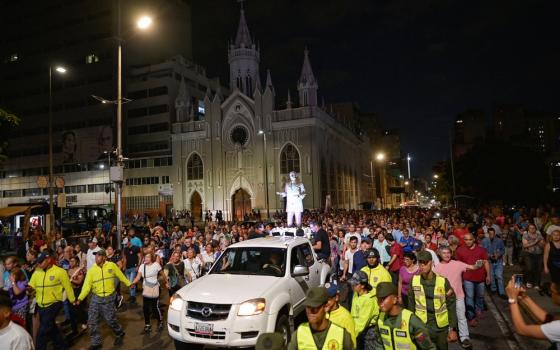When Catholics in the States talk about “new movements” in the church, there’s a tendency to think “conservative,” because the few such groups most people have actually heard of – such as Opus Dei (technically a prelature, not a movement), or the Legionaries of Christ (a religious order, with an affiliated lay movement in Regnum Christi) – do tend to lean to the right.
In Europe, however, where the new movements have had their greatest success, their ideological profile is far less uniform. That’s certainly the case in Italy, where perhaps the best-known lay movement is the Community of Sant’Egidio. Known for its efforts in conflict resolution, ecumenism and inter-religious dialogue, and service to the poor, Sant’Egidio is generally seen as standing on the ecclesiastical “center-left.”
Today Sant’Egidio counts affiliates in 70 countries, including a small presence in the United States, with a grand total of some 50,000 members.
Founded in February 1968, the Community of Sant’Egidio marked its 42nd anniversary Thursday night with a Mass in the Basilica of San Giovanni Laterano celebrated by Cardinal Angelo Bagnasco, president of the Italian bishops’ conference, and attended by a virtual who’s who of Italian political and ecclesiastical life.
One sign of Sant’Egidio’s commitment to the poor came in the presence of Bishop Pierre Dumas of Haiti, who was in Rome to meet Pope Benedict XVI and to solicit help for the work of rebuilding his country in the wake of the recent earthquake. Dumas’ trip was sponsored by Sant’Egidio.
The prominence of Sant’Egidio in and around the Vatican helps explain why over here, it’s never come naturally to think of “the movements” as steering the church in a particular political or theological direction.
Sant’Egidio was born amid the ferment of 1968, founded by a lay academic named Andrea Riccardi in league with a young priest named Vincenzo Paglia. Its “market,” so to speak, was young Italians excited by the progressive energies of the time, but who wanted to give them spiritual depth. For those who know Sant’Egidio, that’s perhaps its defining quality – the way the community integrates vertical and horizontal spirituality, social service with prayer and the sacramental life. Sant’Egidio organizes prayer services at the Basilica of Santa Maria in Trastevere which literally have people hanging from the rafters; in 2009, the estimate is that more than 300,000 visitors took part.
On Thursday night, Bagnasco paid tribute to Sant’Egidio.
“In years in which ‘change’ was a hermeneutical key and the order of the day,” he said, “the community was born recalling what the church has always preached: the true change comes from the heart, and only from there can it radiate out and shape relationships, structures and societies.”
Bagnasco argued that the Roman origins of Sant’Egidio are no accident.
“It’s not just a historical circumstance, but something that has marked [the community’s] nature and its work,” he said. “It inspires that missionary and evangelizing thrust connected to the Petrine ministry, which is the true soul of witness and charity under every sky.”
Riccardi said that yesterday was a festival for Sant’Egidio, but a festival of a very particular sort.
“Above all, it’s a festival for the weak, for immigrants, for people in difficulty, for elderly people who are alone – for those who have found in Sant’Egidio the warmth of a family and the support of a faithful friendship.”




